I have two "modeless" forms:
- one is the special MainForm
- the other is a modeless form
You can see:
- both exist on the taskbar
- both have a taskbar button
- both can be independantly minimized
- both can be independantly restored
- neither is always on top (owned) by the other
Now show a modal form
From this modeless form, i want to show a modal one:
The Modal form is being constructed as:
var
frmExchangeConfirm: TfrmExchangeConfirm;
begin
frmExchangeConfirm := TfrmExchangeConfirm.Create(Application);
try
//Setting popupMode and popupParent still makes the MainForm disabled
// frmExchangeConfirm.PopupMode := pmExplicit;
// frmExchangeConfirm.PopupParent := Self; //owned by us
frmExchangeConfirm.OwnerForm := Self; //tell the form which owner to use
frmExchangeConfirm.ShowModal;
finally
frmExchangeConfirm.Free;
end;
The modal form is told which owner to use through a new OwnerForm property:
protected
procedure SetOwnerForm(const Value: TForm);
public
property OwnerForm: TForm read GetOwnerForm write SetOwnerForm;
end;
which forces an handle recreation:
procedure TfrmExchangeConfirm.SetOwnerForm(const Value: TForm);
begin
FOwnerForm := Value;
if Self.HandleAllocated then
Self.RecreateWnd;
end;
and is then the second time through CreateParams:
procedure TfrmExchangeConfirm.CreateParams(var Params: TCreateParams);
begin
inherited;
if FOwnerForm <> nil then
Params.WndParent := FOwnerForm.Handle;
end;
The problem is:
- once this owned modal form is shown, i cannot interact with the MainForm
- i cannot minimize the MainForm using the taskbar button
- i cannot minimize the Modal, or its owning parent, using the taskbar button
- if i minimize the modal form using the Minimize button, the MainForm disappears
- i can activate the MainForm using its taskbar button; but i cannot interact with it
I've asked this question about 7 times over the last decade. The last time i was promised that making the main form the MainForm would solve everything.
Bonus: WinForms has handled this correctly since .NET 1.0.
There is a lot of confusion about what a modal dialog is. A dialog is modal when you must interact with it before you can continue to use its owner. From the Windows Interface Design Guidelines:
Dialog boxes have two fundamental types:
- Modal dialog boxes require users to complete and close before continuing with the owner window. These dialog boxes are best used for critical or infrequent, one-off tasks that require completion before continuing.
- Modeless dialog boxes allow users to switch between the dialog box and the owner window as desired. These dialog boxes are best used for frequent, repetitive, on-going tasks.
Windows has the concept of an "owner". When a window is "owned" that will will always appear on top of its owner. When a window is "modal", it means that the owner is disabled until the modal task is complete.
You an see this effect in the ProgressDialog API:
HRESULT StartProgressDialog( [in] HWND hwndParent, IUnknown *punkEnableModless, DWORD dwFlags, LPCVOID pvReserved );hwndParent [in]
Type: HWND
A handle to the dialog box's parent window.dwFlags
Type: DWORD
PROGDLG_MODAL
The progress dialog box will be modal to the window specified by hwndParent. By default, a progress dialog box is modeless.
Sure, you could be mean, and disable all other windows
- in the thread
- the process
- or the system
But i want to have the correct behavior. I want to do:
- what Windows does
- what Office applications do
- what Beyond Compare does
- what WinForms does
- what WPF does
- what every application i've ever used does
- and what any user would expect
I've wanted this in my Delphi apps since 1998; when realized Delphi 3 didn't properly support Windows 95 and the taskbar.

